Bei Chen
Understanding DeepResearch via Reports
Oct 09, 2025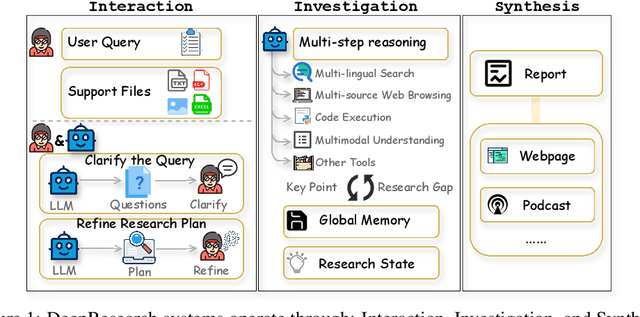

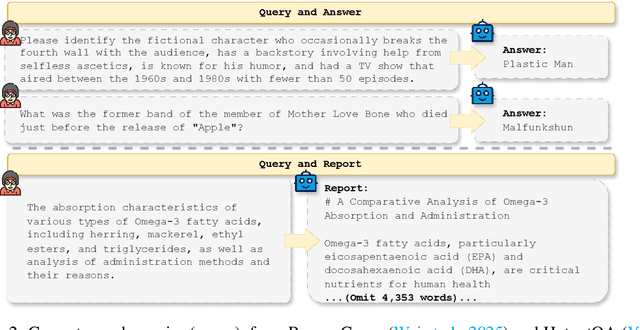

Abstract:DeepResearch agents represent a transformative AI paradigm, conducting expert-level research through sophisticated reasoning and multi-tool integration. However, evaluating these systems remains critically challenging due to open-ended research scenarios and existing benchmarks that focus on isolated capabilities rather than holistic performance. Unlike traditional LLM tasks, DeepResearch systems must synthesize diverse sources, generate insights, and present coherent findings, which are capabilities that resist simple verification. To address this gap, we introduce DeepResearch-ReportEval, a comprehensive framework designed to assess DeepResearch systems through their most representative outputs: research reports. Our approach systematically measures three dimensions: quality, redundancy, and factuality, using an innovative LLM-as-a-Judge methodology achieving strong expert concordance. We contribute a standardized benchmark of 100 curated queries spanning 12 real-world categories, enabling systematic capability comparison. Our evaluation of four leading commercial systems reveals distinct design philosophies and performance trade-offs, establishing foundational insights as DeepResearch evolves from information assistants toward intelligent research partners. Source code and data are available at: https://github.com/HKUDS/DeepResearch-Eval.
A$^2$Search: Ambiguity-Aware Question Answering with Reinforcement Learning
Oct 09, 2025



Abstract:Recent advances in Large Language Models (LLMs) and Reinforcement Learning (RL) have led to strong performance in open-domain question answering (QA). However, existing models still struggle with questions that admit multiple valid answers. Standard QA benchmarks, which typically assume a single gold answer, overlook this reality and thus produce inappropriate training signals. Existing attempts to handle ambiguity often rely on costly manual annotation, which is difficult to scale to multi-hop datasets such as HotpotQA and MuSiQue. In this paper, we present A$^2$Search, an annotation-free, end-to-end training framework to recognize and handle ambiguity. At its core is an automated pipeline that detects ambiguous questions and gathers alternative answers via trajectory sampling and evidence verification. The model is then optimized with RL using a carefully designed $\mathrm{AnsF1}$ reward, which naturally accommodates multiple answers. Experiments on eight open-domain QA benchmarks demonstrate that A$^2$Search achieves new state-of-the-art performance. With only a single rollout, A$^2$Search-7B yields an average $\mathrm{AnsF1}@1$ score of $48.4\%$ across four multi-hop benchmarks, outperforming all strong baselines, including the substantially larger ReSearch-32B ($46.2\%$). Extensive analyses further show that A$^2$Search resolves ambiguity and generalizes across benchmarks, highlighting that embracing ambiguity is essential for building more reliable QA systems. Our code, data, and model weights can be found at https://github.com/zfj1998/A2Search
Generative Frame Sampler for Long Video Understanding
Mar 12, 2025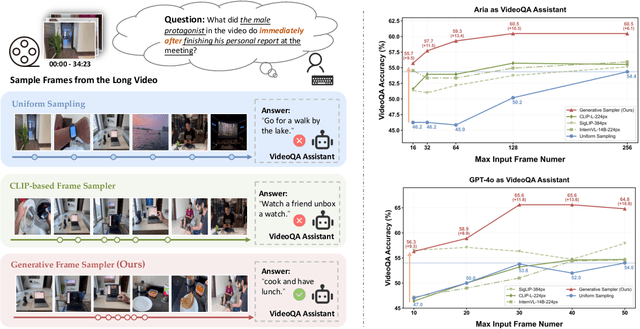
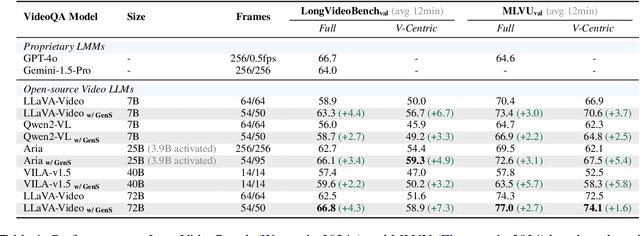
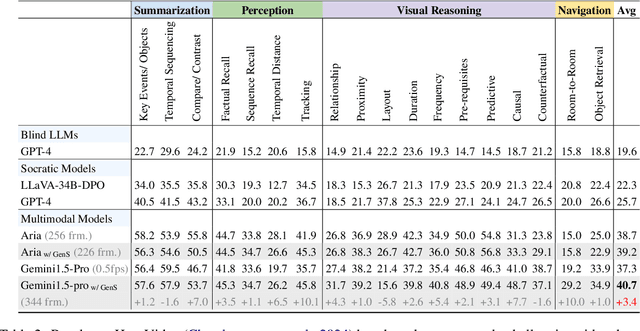
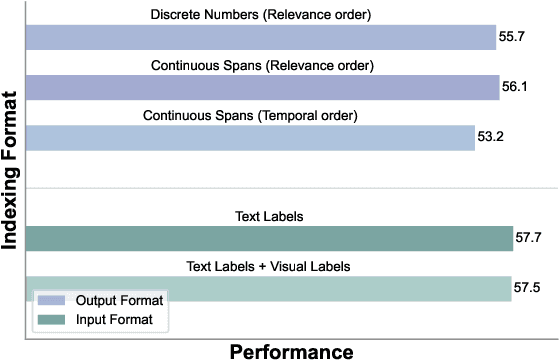
Abstract:Despite recent advances in Video Large Language Models (VideoLLMs), effectively understanding long-form videos remains a significant challenge. Perceiving lengthy videos containing thousands of frames poses substantial computational burden. To mitigate this issue, this paper introduces Generative Frame Sampler (GenS), a plug-and-play module integrated with VideoLLMs to facilitate efficient lengthy video perception. Built upon a lightweight VideoLLM, GenS leverages its inherent vision-language capabilities to identify question-relevant frames. To facilitate effective retrieval, we construct GenS-Video-150K, a large-scale video instruction dataset with dense frame relevance annotations. Extensive experiments demonstrate that GenS consistently boosts the performance of various VideoLLMs, including open-source models (Qwen2-VL-7B, Aria-25B, VILA-40B, LLaVA-Video-7B/72B) and proprietary assistants (GPT-4o, Gemini). When equipped with GenS, open-source VideoLLMs achieve impressive state-of-the-art results on long-form video benchmarks: LLaVA-Video-72B reaches 66.8 (+4.3) on LongVideoBench and 77.0 (+2.7) on MLVU, while Aria obtains 39.2 on HourVideo surpassing the Gemini-1.5-pro by 1.9 points. We will release all datasets and models at https://generative-sampler.github.io.
ProBench: Judging Multimodal Foundation Models on Open-ended Multi-domain Expert Tasks
Mar 10, 2025Abstract:Solving expert-level multimodal tasks is a key milestone towards general intelligence. As the capabilities of multimodal large language models (MLLMs) continue to improve, evaluation of such advanced multimodal intelligence becomes necessary yet challenging. In this work, we introduce ProBench, a benchmark of open-ended user queries that require professional expertise and advanced reasoning. ProBench consists of 4,000 high-quality samples independently submitted by professionals based on their daily productivity demands. It spans across 10 fields and 56 sub-fields, including science, arts, humanities, coding, mathematics, and creative writing. Experimentally, we evaluate and compare 24 latest models using MLLM-as-a-Judge. Our results reveal that although the best open-source models rival the proprietary ones, ProBench presents significant challenges in visual perception, textual understanding, domain knowledge and advanced reasoning, thus providing valuable directions for future multimodal AI research efforts.
Aria-UI: Visual Grounding for GUI Instructions
Dec 20, 2024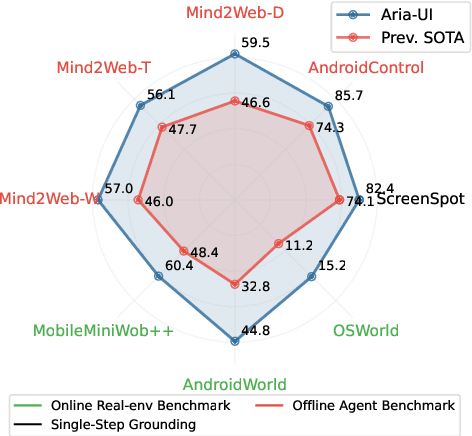


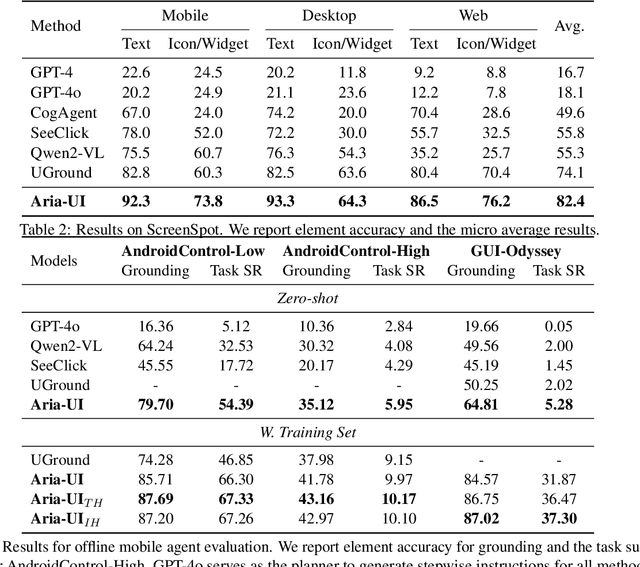
Abstract:Digital agents for automating tasks across different platforms by directly manipulating the GUIs are increasingly important. For these agents, grounding from language instructions to target elements remains a significant challenge due to reliance on HTML or AXTree inputs. In this paper, we introduce Aria-UI, a large multimodal model specifically designed for GUI grounding. Aria-UI adopts a pure-vision approach, eschewing reliance on auxiliary inputs. To adapt to heterogeneous planning instructions, we propose a scalable data pipeline that synthesizes diverse and high-quality instruction samples for grounding. To handle dynamic contexts in task performing, Aria-UI incorporates textual and text-image interleaved action histories, enabling robust context-aware reasoning for grounding. Aria-UI sets new state-of-the-art results across offline and online agent benchmarks, outperforming both vision-only and AXTree-reliant baselines. We release all training data and model checkpoints to foster further research at https://ariaui.github.io.
Yi-Lightning Technical Report
Dec 03, 2024



Abstract:This technical report presents Yi-Lightning, our latest flagship large language model (LLM). It achieves exceptional performance, ranking 6th overall on Chatbot Arena, with particularly strong results (2nd to 4th place) in specialized categories including Chinese, Math, Coding, and Hard Prompts. Yi-Lightning leverages an enhanced Mixture-of-Experts (MoE) architecture, featuring advanced expert segmentation and routing mechanisms coupled with optimized KV-caching techniques. Our development process encompasses comprehensive pre-training, supervised fine-tuning (SFT), and reinforcement learning from human feedback (RLHF), where we devise deliberate strategies for multi-stage training, synthetic data construction, and reward modeling. Furthermore, we implement RAISE (Responsible AI Safety Engine), a four-component framework to address safety issues across pre-training, post-training, and serving phases. Empowered by our scalable super-computing infrastructure, all these innovations substantially reduce training, deployment and inference costs while maintaining high-performance standards. With further evaluations on public academic benchmarks, Yi-Lightning demonstrates competitive performance against top-tier LLMs, while we observe a notable disparity between traditional, static benchmark results and real-world, dynamic human preferences. This observation prompts a critical reassessment of conventional benchmarks' utility in guiding the development of more intelligent and powerful AI systems for practical applications. Yi-Lightning is now available through our developer platform at https://platform.lingyiwanwu.com.
HumanEval-V: Evaluating Visual Understanding and Reasoning Abilities of Large Multimodal Models Through Coding Tasks
Oct 16, 2024
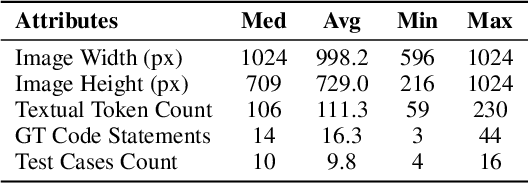

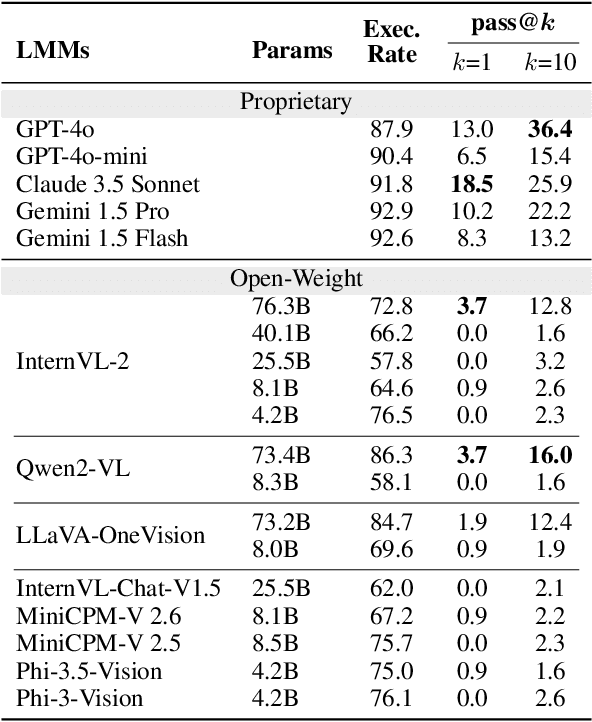
Abstract:Coding tasks have been valuable for evaluating Large Language Models (LLMs), as they demand the comprehension of high-level instructions, complex reasoning, and the implementation of functional programs -- core capabilities for advancing Artificial General Intelligence. Despite the progress in Large Multimodal Models (LMMs), which extend LLMs with visual perception and understanding capabilities, there remains a notable lack of coding benchmarks that rigorously assess these models, particularly in tasks that emphasize visual reasoning. To address this gap, we introduce HumanEval-V, a novel and lightweight benchmark specifically designed to evaluate LMMs' visual understanding and reasoning capabilities through code generation. HumanEval-V includes 108 carefully crafted, entry-level Python coding tasks derived from platforms like CodeForces and Stack Overflow. Each task is adapted by modifying the context and algorithmic patterns of the original problems, with visual elements redrawn to ensure distinction from the source, preventing potential data leakage. LMMs are required to complete the code solution based on the provided visual context and a predefined Python function signature outlining the task requirements. Every task is equipped with meticulously handcrafted test cases to ensure a thorough and reliable evaluation of model-generated solutions. We evaluate 19 state-of-the-art LMMs using HumanEval-V, uncovering significant challenges. Proprietary models like GPT-4o achieve only 13% pass@1 and 36.4% pass@10, while open-weight models with 70B parameters score below 4% pass@1. Ablation studies further reveal the limitations of current LMMs in vision reasoning and coding capabilities. These results underscore key areas for future research to enhance LMMs' capabilities. We have open-sourced our code and benchmark at https://github.com/HumanEval-V/HumanEval-V-Benchmark.
Aria: An Open Multimodal Native Mixture-of-Experts Model
Oct 08, 2024
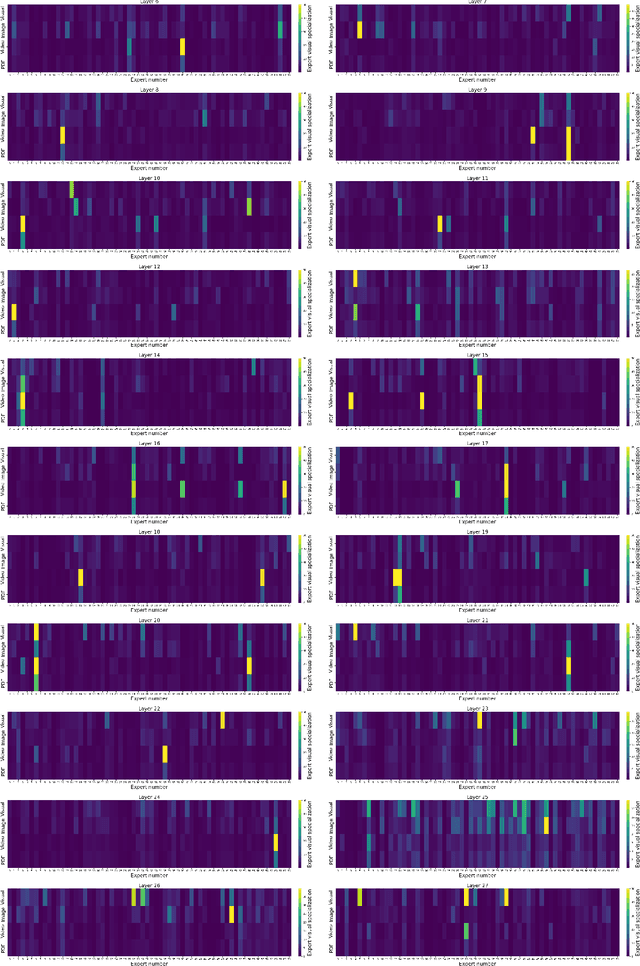


Abstract:Information comes in diverse modalities. Multimodal native AI models are essential to integrate real-world information and deliver comprehensive understanding. While proprietary multimodal native models exist, their lack of openness imposes obstacles for adoptions, let alone adaptations. To fill this gap, we introduce Aria, an open multimodal native model with best-in-class performance across a wide range of multimodal, language, and coding tasks. Aria is a mixture-of-expert model with 3.9B and 3.5B activated parameters per visual token and text token, respectively. It outperforms Pixtral-12B and Llama3.2-11B, and is competitive against the best proprietary models on various multimodal tasks. We pre-train Aria from scratch following a 4-stage pipeline, which progressively equips the model with strong capabilities in language understanding, multimodal understanding, long context window, and instruction following. We open-source the model weights along with a codebase that facilitates easy adoptions and adaptations of Aria in real-world applications.
LongVideoBench: A Benchmark for Long-context Interleaved Video-Language Understanding
Jul 22, 2024



Abstract:Large multimodal models (LMMs) are processing increasingly longer and richer inputs. Albeit the progress, few public benchmark is available to measure such development. To mitigate this gap, we introduce LongVideoBench, a question-answering benchmark that features video-language interleaved inputs up to an hour long. Our benchmark includes 3,763 varying-length web-collected videos with their subtitles across diverse themes, designed to comprehensively evaluate LMMs on long-term multimodal understanding. To achieve this, we interpret the primary challenge as to accurately retrieve and reason over detailed multimodal information from long inputs. As such, we formulate a novel video question-answering task termed referring reasoning. Specifically, as part of the question, it contains a referring query that references related video contexts, called referred context. The model is then required to reason over relevant video details from the referred context. Following the paradigm of referring reasoning, we curate 6,678 human-annotated multiple-choice questions in 17 fine-grained categories, establishing one of the most comprehensive benchmarks for long-form video understanding. Evaluations suggest that the LongVideoBench presents significant challenges even for the most advanced proprietary models (e.g. GPT-4o, Gemini-1.5-Pro, GPT-4-Turbo), while their open-source counterparts show an even larger performance gap. In addition, our results indicate that model performance on the benchmark improves only when they are capable of processing more frames, positioning LongVideoBench as a valuable benchmark for evaluating future-generation long-context LMMs.
PIN: A Knowledge-Intensive Dataset for Paired and Interleaved Multimodal Documents
Jun 20, 2024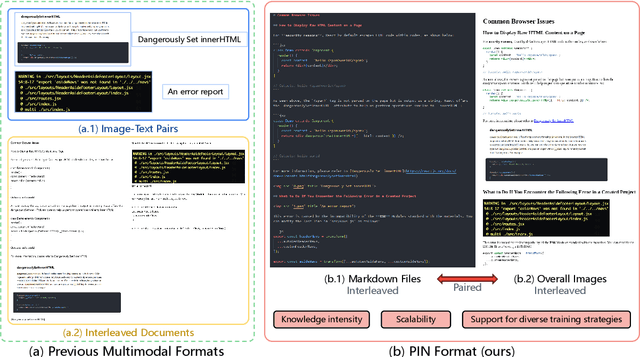
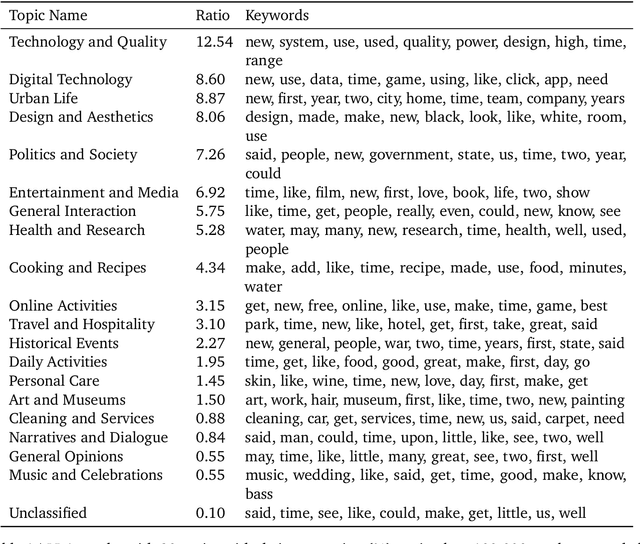
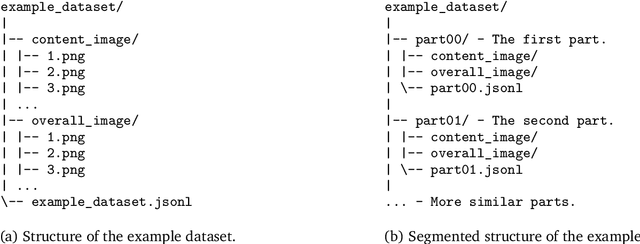
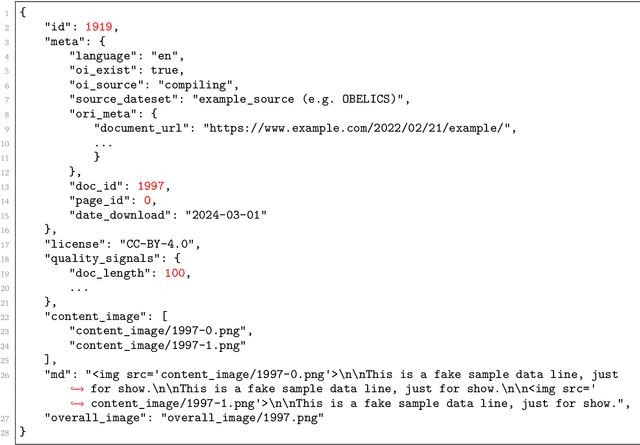
Abstract:Recent advancements in Large Multimodal Models (LMMs) have leveraged extensive multimodal datasets to enhance capabilities in complex knowledge-driven tasks. However, persistent challenges in perceptual and reasoning errors limit their efficacy, particularly in interpreting intricate visual data and deducing multimodal relationships. Addressing these issues, we introduce a novel dataset format, PIN (Paired and INterleaved multimodal documents), designed to significantly improve both the depth and breadth of multimodal training. The PIN format is built on three foundational principles: knowledge intensity, scalability, and support for diverse training modalities. This innovative format combines markdown files and comprehensive images to enrich training data with a dense knowledge structure and versatile training strategies. We present PIN-14M, an open-source dataset comprising 14 million samples derived from a diverse range of Chinese and English sources, tailored to include complex web and scientific content. This dataset is constructed meticulously to ensure data quality and ethical integrity, aiming to facilitate advanced training strategies and improve model robustness against common multimodal training pitfalls. Our initial results, forming the basis of this technical report, suggest significant potential for the PIN format in refining LMM performance, with plans for future expansions and detailed evaluations of its impact on model capabilities.
 Add to Chrome
Add to Chrome Add to Firefox
Add to Firefox Add to Edge
Add to Edge